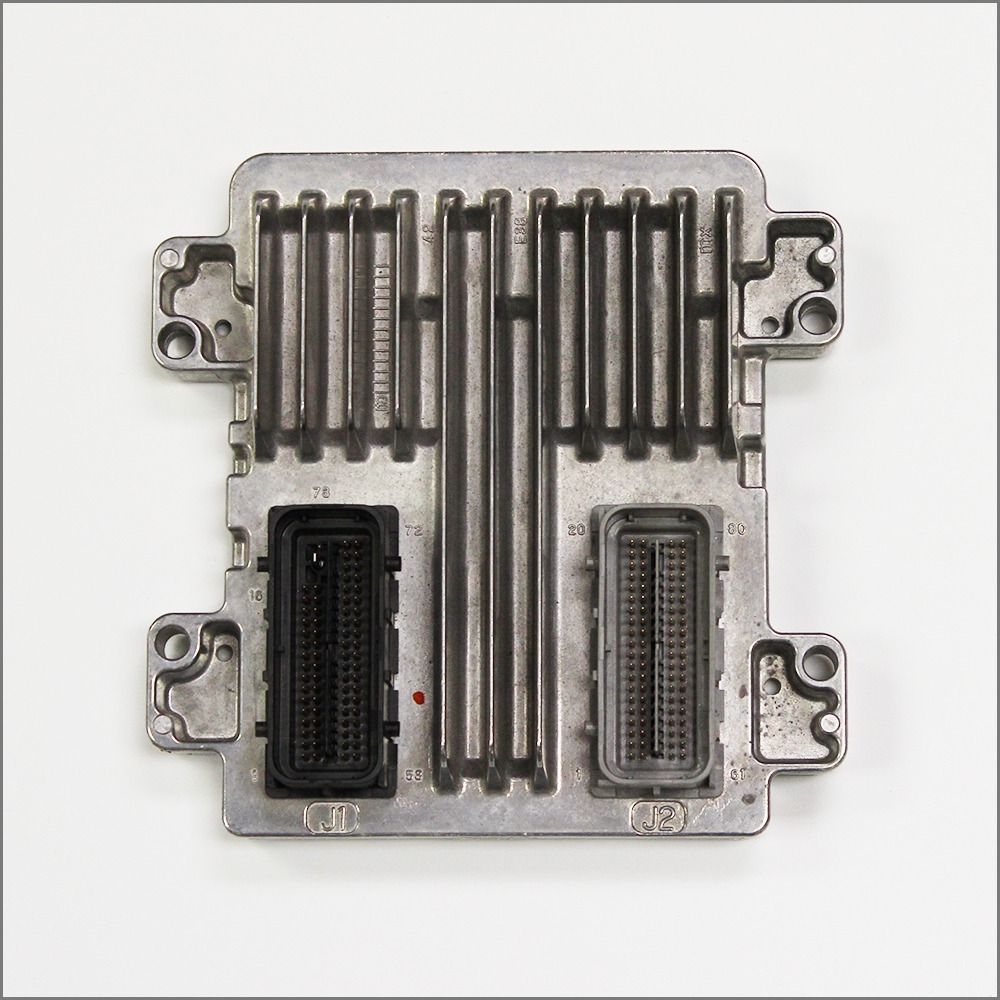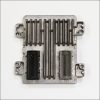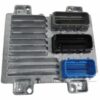Is Your GM Vehicle Running Rough? The ECM Might Be the Culprit.
If you’re dealing with frustrating issues like a persistent check engine light, unexplained stalling, poor fuel economy, or erratic engine behavior in your GM car, truck, or van, a failing Engine Control Module (ECM) is a very likely cause. The ECM is the brain of your vehicle’s engine, controlling everything from fuel mixture and ignition timing to transmission shifting and emissions. When it fails, it can cause a cascade of problems that are often difficult to diagnose. This isn’t just an inconvenience; it can affect your vehicle’s reliability, performance, and safety.
From the Diagnostic Bay
I once had a 2012 Silverado 1500 in the shop with a ghost of a problem. The owner complained of random stalling at stoplights, but it never threw a specific code—just a generic U0100 ‘Lost Communication’ code that would pop up occasionally. We checked wiring harnesses, grounds, and sensors for weeks. Finally, on a hunch, we monitored the ECM’s internal temperature data stream. We saw the processor temperature spike just before it would cut out. We swapped in a pre-programmed ECM, and the problem vanished instantly. It’s a classic example of how internal electronic failure can cause symptoms that lead you down a dozen wrong paths.
Common Symptoms of a Failing ECM
- ✔ Persistent Check Engine Light (CEL) on your dashboard.
- ✔ Engine stalling or misfiring for no apparent reason.
- ✔ Difficulty starting the engine or a complete no-start condition.
- ✔ Noticeable decrease in fuel efficiency.
- ✔ Harsh or incorrect automatic transmission shifting.
- ✔ Loss of power and sluggish acceleration.
- ✔ Communication errors with diagnostic scan tools.
The Direct-Fit Solution: A Programmed ECM 12633238
Don’t let a faulty computer keep your vehicle off the road. This Engine Control Module, part number 12633238 (also compatible with 12633055), is the definitive solution for a wide range of GM vehicles. The biggest hurdle in replacing an ECM is the complex programming required to make it communicate with your specific vehicle. We eliminate that problem entirely. When you order from us, we flash the module with the latest official GM software calibrated specifically to your vehicle’s Vehicle Identification Number (VIN). This ensures that when you receive your Programmed ECM 12633238, it’s ready for a straightforward installation, restoring your vehicle’s factory performance and reliability.
This process saves you a costly trip to the dealership and eliminates the need for expensive proprietary scan tools. Simply provide your VIN after purchase, and our technicians will handle the complex software side, so you can focus on the simple mechanical installation. This is the most efficient and reliable way to get your Camaro, Silverado, Corvette, or other compatible GM vehicle operating as it should. With our Programmed ECM 12633238, you’re not just buying a part; you’re buying a complete, ready-to-install solution.
Frequently Asked Questions
Do I need to program this ECM?
No. The main benefit of our service is that we program the module for you before it ships. We use your vehicle’s VIN to load the correct, updated GM software, making it a plug-and-play part upon arrival.
What is a VIN and where do I find it?
The VIN is your vehicle’s unique 17-digit identification number. You can typically find it on a plate on the driver’s side dashboard (visible through the windshield), on the driver’s side door jamb sticker, or on your vehicle’s registration and insurance documents.
Will this fix my car’s problems and turn off the check engine light?
If the ECM is the faulty component causing your issues, then yes, this replacement part will resolve those problems and allow the check engine light to be cleared. However, if other underlying issues exist (e.g., a bad sensor), those will need to be addressed separately.
Is any other procedure needed after installation?
In many cases, it’s a direct installation. However, some GM vehicles may require a security relearn procedure (often called Passlock or Passkey) or a Crankshaft Variation Relearn (CASE relearn) to be performed after the new ECM is installed. These procedures are typically straightforward and can be found in a service manual or performed by a qualified technician.
How can I be sure my old ECM is bad?
While the symptoms listed above are strong indicators, the best way to be 100% certain is to have a professional diagnosis performed. A technician can rule out wiring, sensor, or other module issues to confirm the ECM is the root cause of the problem.


